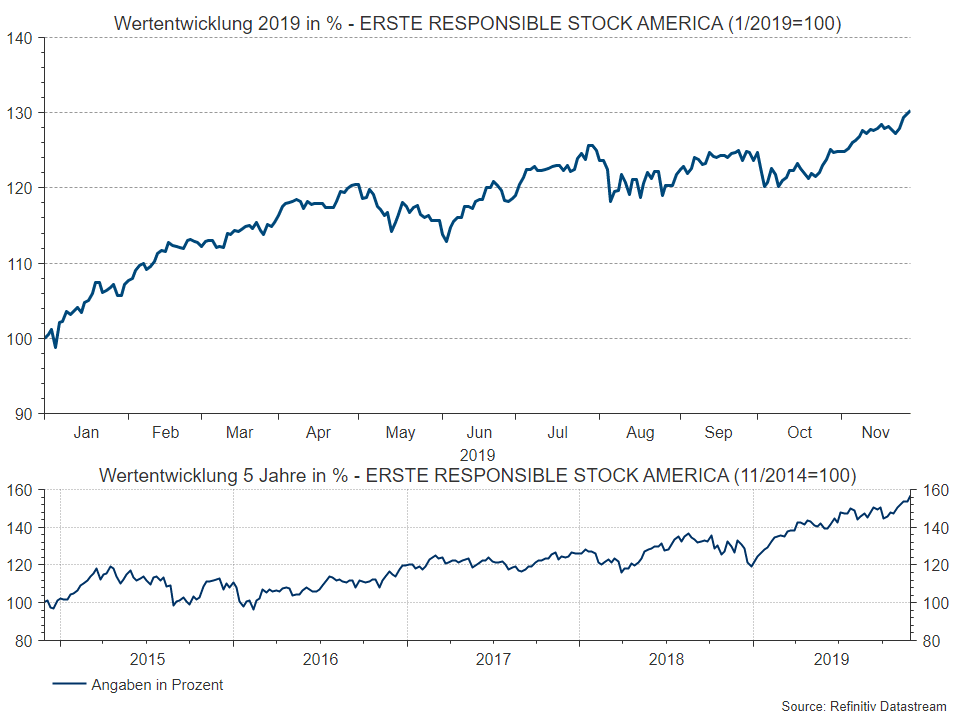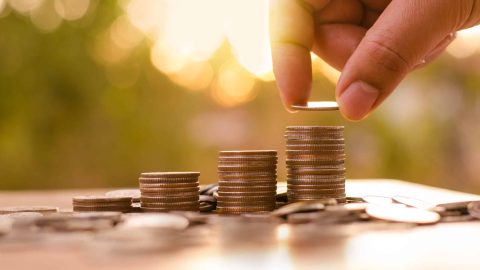Guest commentary by expert Ronald-Peter Stöferle
The public is still being fed the narrative of gold being a dirty metal. Gold is considered environmentally reproachable because open-pit mining requires enormous volumes of rock to be moved; and in rare cases, mercury is used in the process. Gold is also regarded as soiled in terms of the working conditions in some mines – sometimes the (polemical) term “blood gold” is even used. However, this angle fails to take into account the full picture, because it only focuses on the mining of new gold and forgets about other significant aspects. There are indeed good reasons why gold is already quite “green” nowadays.
Gold cannot be consumed and is very environmentally friendly due to its repeat use
Gold has been mined for 7,000 years. Over that period, more than 190,000 tonnes of gold have been produced, which is equal to a cube with an edge length of 20.5m. 50% thereof have been produced since the 1950s, with new production adding about 3,300 tonnes annually. This means the “inflation rate” of gold is only 1.7%. Practically all the gold ever produced is still available and can be recycled. Thus, gold remains in its purest form almost forever, which is why the social and environmental costs of gold production can be allocated over an almost unlimited period of time, and as a result they converge towards zero.
The production of new gold emits relatively little CO2
A closer look at the CO2 emissions of gold per value unit in comparison with copper, aluminium, steel, coal, zinc, and lead helps us understand the advantage of gold from production to refining relative to those commodities.
Emission intensity per standard value, in kg of CO2 emissions, in USD, 2018

Source: Gold and climate change: An introduction, World Gold Council, 2018, Incrementum AG
Also, gold recycling causes 90% less CO2 emissions than gold mining. Some 25% of annual gold demand is covered by recycling. Even though the better will always be the enemy of the good, which is why the gold sector can and has to continue making efforts towards the reduction of its environmental footprint, the gold sector is already well on its way of environmental responsibility.
A higher ESG rating boosts performance
For better comparability between companies and in order to keep track of the development of specific companies over time, ESG ratings have been introduced in recent years that evaluate the performance of a company on the basis of environmental, social, and governance criteria. Over the past five years, the gold producers with the best ESG ratings (if available) have significantly outperformed their competitors with lower ESG ratings. Specifically, Newmont Goldcorp has had a better ESG rating and a better financial performance than all of its peers. This comes as no surprise, given that Newmont is often seen as pioneer in the field of ESG. For example, the company has reduced its freshwater consumption by about 470mn litres at its Pete Bajo Mine as a result of the construction of a new pipeline. This example of Newmont shows to what significant degree the use of technology makes the sector safer and more environmentally friendly. [1]
How the blockchain technology helps in the compliance with ESG criteria
The gold sector has used technological progress also to increase the transparency in gold production and gold trade. For example, the most important mining companies already resort to blockchain technology to trace and confirm the origin of their gold. The so-called blood gold could forever be a thing of the past.
Blockchain technology will not only be relevant for investors, but also influence the economic success of mining companies. The auditing firm BDO forecasts a possible gold price premium of 3 to 5% for gold from conflict-free mines for the coming years. The traceability will ensure the introduction of safer and ESG-compliant methods across the entire gold value chain. As a result, mining companies should become safer, cleaner, and more productive and generate higher returns for all stakeholders along the value chain.
ESG on the investment front
In reaction to the ESG boom, a number of different ratings, quality seals, valuation methods, and data bases have emerged in recent years that label sustainable investment products. However, from our point of view, the criteria of the existing ratings are sometimes very rigid. The production of commodities tends to get demonised across the board, which puts an elementary part of our industrialised world into the rating providers’ bad books. Also, no internationally renowned quality seal has established itself so far without restriction. Rather, new seals have mushroomed, leaving consumers and consultants rather bewildered. We often get the impression that these seals that are based on the superficial analysis of incomplete criteria are used to greenwash certain rating recipients. So, as long as there are no unified, reliable standards, we will stick to our best-in-class approach in our investment strategy. After or country filters have excluded certain countries based on their jurisdiction, we select exclusively companies that take ESG seriously and have taken according measures.
In any case, investors should keep a close eye on the topic of ESG. We will continue to proactively create awareness for the issue in the mining sector on the basis of matter-of-fact, serious research and clear principles. The In Gold We Trust Report 2020, due for release on 27 May 2020, will again contain a focus on the ESG initiatives of the gold sector. We are planning on an interview with Terry Heyman from the World Gold Council, whose “Responsible Gold Mining Principles“[2] are considered a benchmark framework for the mining industry.
Conclusion
In public perception, gold has an ambivalent reputation. On the one hand, it is seen as precious metal that conserves its value and is very popular as investment and jewellery. On the other hand, dubious methods in the areas of ecology and labour laws especially when it comes to production do not benefit the reputation of gold. The increasing degree of compliance with ESG criteria in the gold sector could therefore also improve the public perception of the gold sector. But given its non-consumability, a fact-based analysis would suggest that gold is already a very green metal.
[1] As reference for example, National Mining: This is Mining, www.youtube.com/watch?v=M1Ubbyn2vrc
[2] World Gold Council: Responsible Gold Mining Principles
Legal note:
Prognoses are no reliable indicator for future performance.
Legal disclaimer
This document is an advertisement. Unless indicated otherwise, source: Erste Asset Management GmbH. The language of communication of the sales offices is German and the languages of communication of the Management Company also include English.
The prospectus for UCITS funds (including any amendments) is prepared and published in accordance with the provisions of the InvFG 2011 as amended. Information for Investors pursuant to § 21 AIFMG is prepared for the alternative investment funds (AIF) administered by Erste Asset Management GmbH pursuant to the provisions of the AIFMG in conjunction with the InvFG 2011.
The currently valid versions of the prospectus, the Information for Investors pursuant to § 21 AIFMG, and the key information document can be found on the website www.erste-am.com under “Mandatory publications” and can be obtained free of charge by interested investors at the offices of the Management Company and at the offices of the depositary bank. The exact date of the most recent publication of the prospectus, the languages in which the fund prospectus or the Information for Investors pursuant to Art 21 AIFMG and the key information document are available, and any other locations where the documents can be obtained are indicated on the website www.erste-am.com. A summary of the investor rights is available in German and English on the website www.erste-am.com/investor-rights and can also be obtained from the Management Company.
The Management Company can decide to suspend the provisions it has taken for the sale of unit certificates in other countries in accordance with the regulatory requirements.
Note: You are about to purchase a product that may be difficult to understand. We recommend that you read the indicated fund documents before making an investment decision. In addition to the locations listed above, you can obtain these documents free of charge at the offices of the referring Sparkassen bank and the offices of Erste Bank der oesterreichischen Sparkassen AG. You can also access these documents electronically at www.erste-am.com.
Our analyses and conclusions are general in nature and do not take into account the individual characteristics of our investors in terms of earnings, taxation, experience and knowledge, investment objective, financial position, capacity for loss, and risk tolerance. Past performance is not a reliable indicator of the future performance of a fund.
Please note: Investments in securities entail risks in addition to the opportunities presented here. The value of units and their earnings can rise and fall. Changes in exchange rates can also have a positive or negative effect on the value of an investment. For this reason, you may receive less than your originally invested amount when you redeem your units. Persons who are interested in purchasing units in investment funds are advised to read the current fund prospectus(es) and the Information for Investors pursuant to § 21 AIFMG, especially the risk notices they contain, before making an investment decision. If the fund currency is different than the investor’s home currency, changes in the relevant exchange rate can positively or negatively influence the value of the investment and the amount of the costs associated with the fund in the home currency.
We are not permitted to directly or indirectly offer, sell, transfer, or deliver this financial product to natural or legal persons whose place of residence or domicile is located in a country where this is legally prohibited. In this case, we may not provide any product information, either.
Please consult the corresponding information in the fund prospectus and the Information for Investors pursuant to § 21 AIFMG for restrictions on the sale of the fund to American or Russian citizens.
It is expressly noted that this communication does not provide any investment recommendations, but only expresses our current market assessment. Thus, this communication is not a substitute for investment advice.
This document does not represent a sales activity of the Management Company and therefore may not be construed as an offer for the purchase or sale of financial or investment instruments.
Erste Asset Management GmbH is affiliated with the Erste Bank and austrian Sparkassen banks.
Please also read the “Information about us and our securities services” published by your bank.

